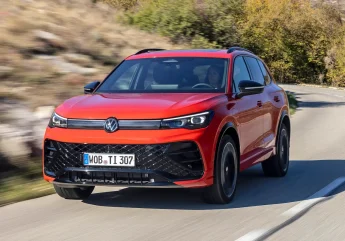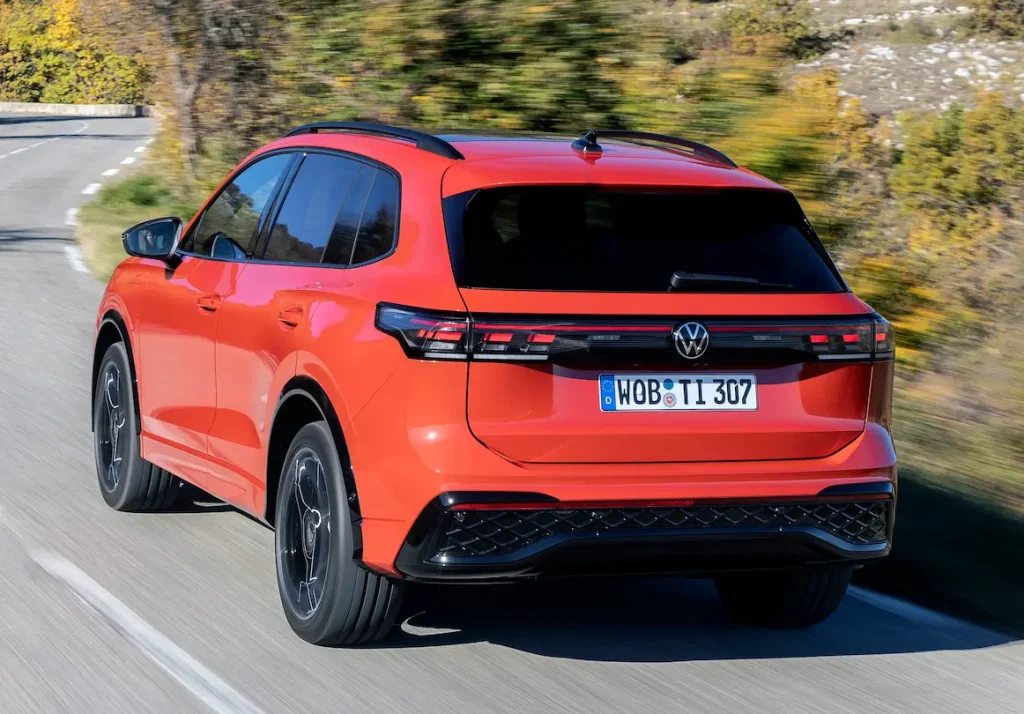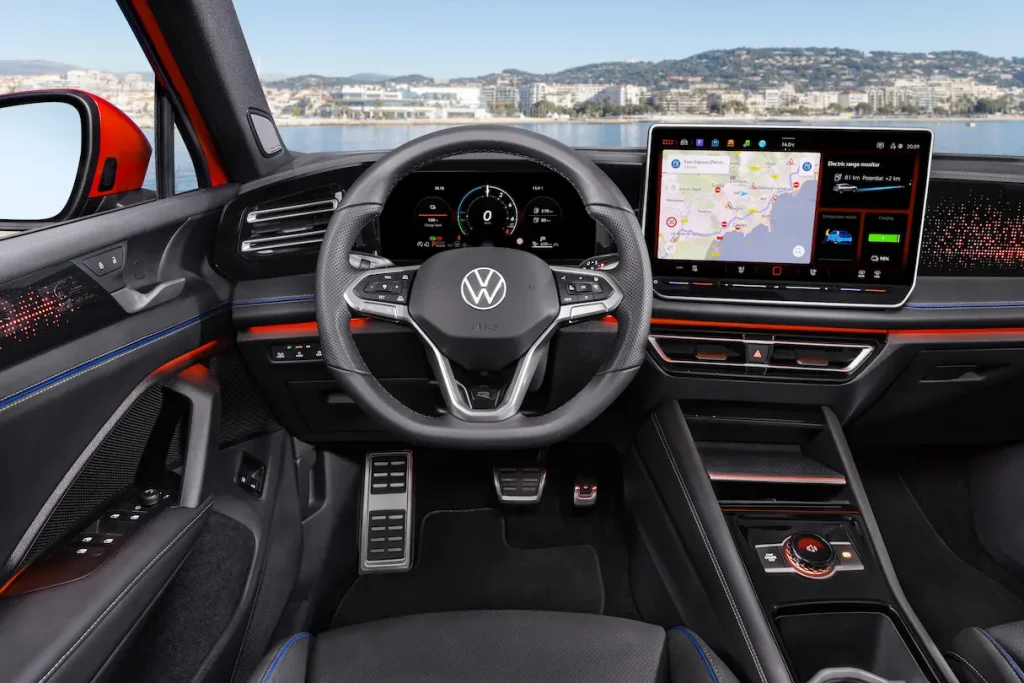
When Volkswagen unveiled the new, third-generation version of its Tiguan medium SUV, the headline angle for fleets was always likely to be the plug-in hybrids. Badged eHybrid, these pair a 1.5-litre petrol engine with an electric motor, with total system outputs of 204hp and 272hp available. More importantly, 19.7kWh batteries allow an EV-only range of more than 70 miles, meaning a company car tax BIK liability of just 5%.
After the initial Tiguan launch featured only mild hybrid petrol and diesel engines, the eHybrids are now here, and we’ve had the chance to sample the 204hp version, which as the cheaper of the PHEVs is especially likely to attract fleet interest.
Performance and drive
We would describe the level of acceleration on offer with this eHybrid as reasonable for a family SUV, though you do get a bit of noise from the engine in the process.

The Tiguan’s handling is pretty good for the segment – the suspension keeps it fairly flat in corners and the steering is quite responsive. The level of ride comfort on offer is also fairly good considering the extra weight of the plug-in hybrid powertrain. Overall, we’d describe the driving experience as being above average across the board, without being outstanding in any given area.
Interior and tech
Our test car was in the range-topping, sports-inspired R-Line equipment grade, which meant some items of kit, such as bucket seats, that felt a bit out of place in a family SUV, although those seats were in fact comfortable enough. Our car was fitted with an optional 15in infotainment screen, which looks impressive and works well in conjunction with the driver display and (also optional) head-up display. Interior material quality is pretty good, with an interesting patterned panel in front of the front passenger helping to lift things visually.
The Tiguan’s interior is arguable most impressive in the back, where there’s an abundant amount of legroom, and good headroom as well despite our test car featuring an optional panoramic sunroof. Rear passengers also benefit from dedicated climate controls and USB ports.

A 490-litre boot looks more capacious than that figure suggests, and features a usefully low load lip. However, the need to accommodate the eHybrid’s battery means it’s down by 162 litres compared with the other Tiguan powertrain options.
As you’d expect, the main value argument for the Tiguan is that 5% BIK rate, since compared with (admittedly more powerful) plug-in hybrid rivals such as the Hyundai Tucson, Kia Sportage, and Ford Kuga, the Tiguan will be around £40 cheaper a month to tax for a 40% taxpayer company car driver. However, we should also note that the Tiguan is competitive on an overall cost-per-mile basis, on which it beats the equivalent Hyundai and Kia and is only slightly behind the Ford.
Positives: Impressively low BIK figure, spacious interior, no dynamic weaknesses
Negatives: Hybrid battery compromises boot space, engine refinement sometimes drops
Standard equipment: LED headlights and tail lights, 17in alloy wheels, 12.9in infotainment screen, 10.5in driver display, wireless App-Connect, front and rear parking sensors, reversing camera, autonomous emergency braking with pedestrian and cyclist monitoring, front cross traffic assist, side assist, rear traffic alert and exit warning system, lane keep assist
Engines: Petrol: 204hp 2.0, 265hp 2.0; Diesel: 150hp 2.0; Petrol mild hybrid: 130hp 1.5, 150hp 1.5; Plug-in hybrid: 204hp 1.5, 272hp 1.5
Equipment grades: Tiguan, Life, Match, Elegance, R-Line
Transmissions: Six-speed automatic, seven-speed automatic
| Model | Volkswagen Tiguan R-Line 1.5 TSI eHybrid 204 PS 6spd DSG |
| P11D | £45,475 |
| Residual value | 51.3% |
| Depreciation | £22,149 |
| Fuel | £5,228 |
| Service, maintenance and repair | £3,392 |
| Cost per mile | 51.28p |
| Fuel consumption | 646mpg |
| CO2 (BIK%) | 10g/km (5%) |
| BIK 20/40% a month | £38/£76 |
| Luggage capacity | 490 litres |
| Engine size/power | 1,498cc/204hp |
| Score | 8/10 |





